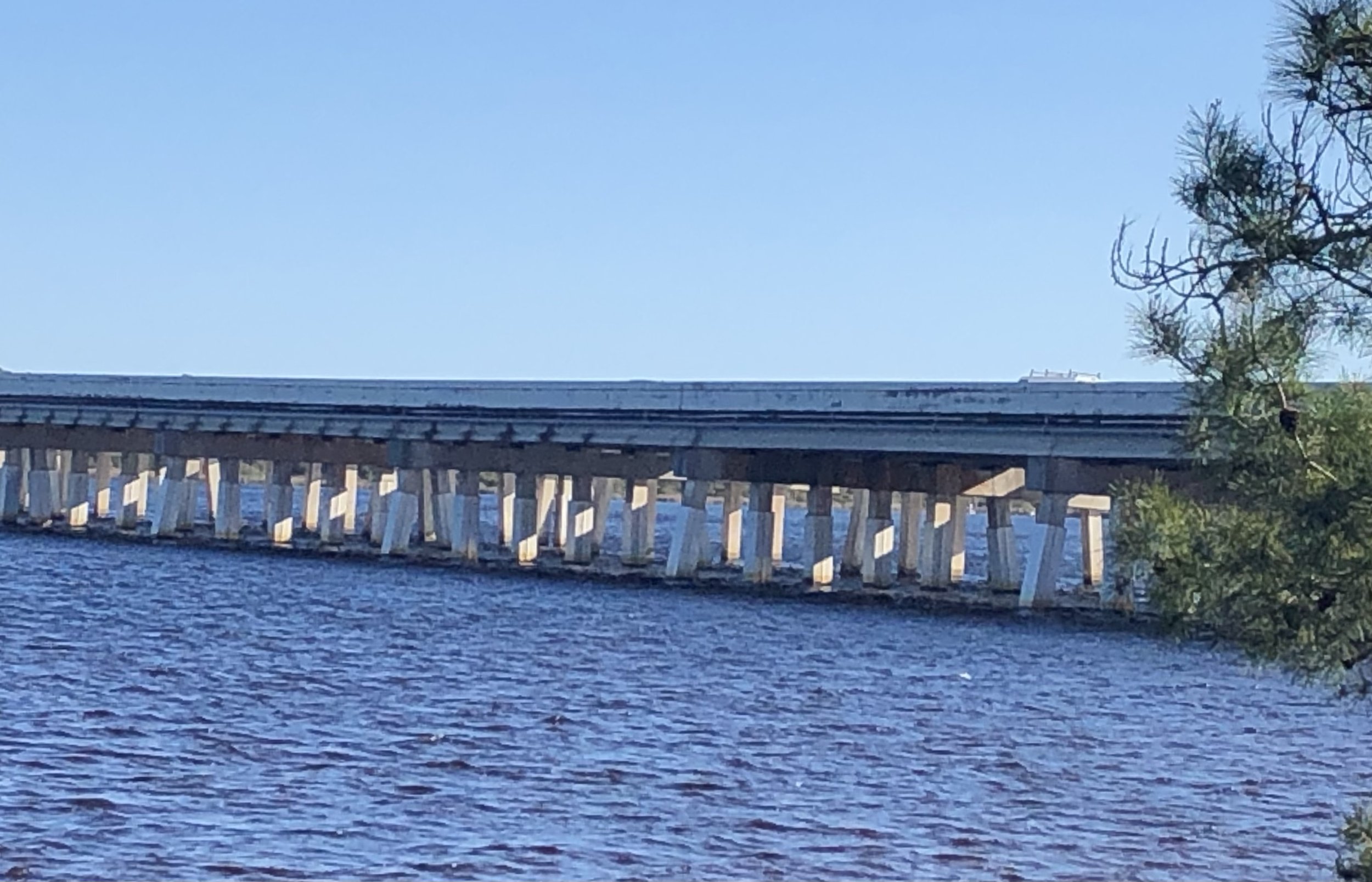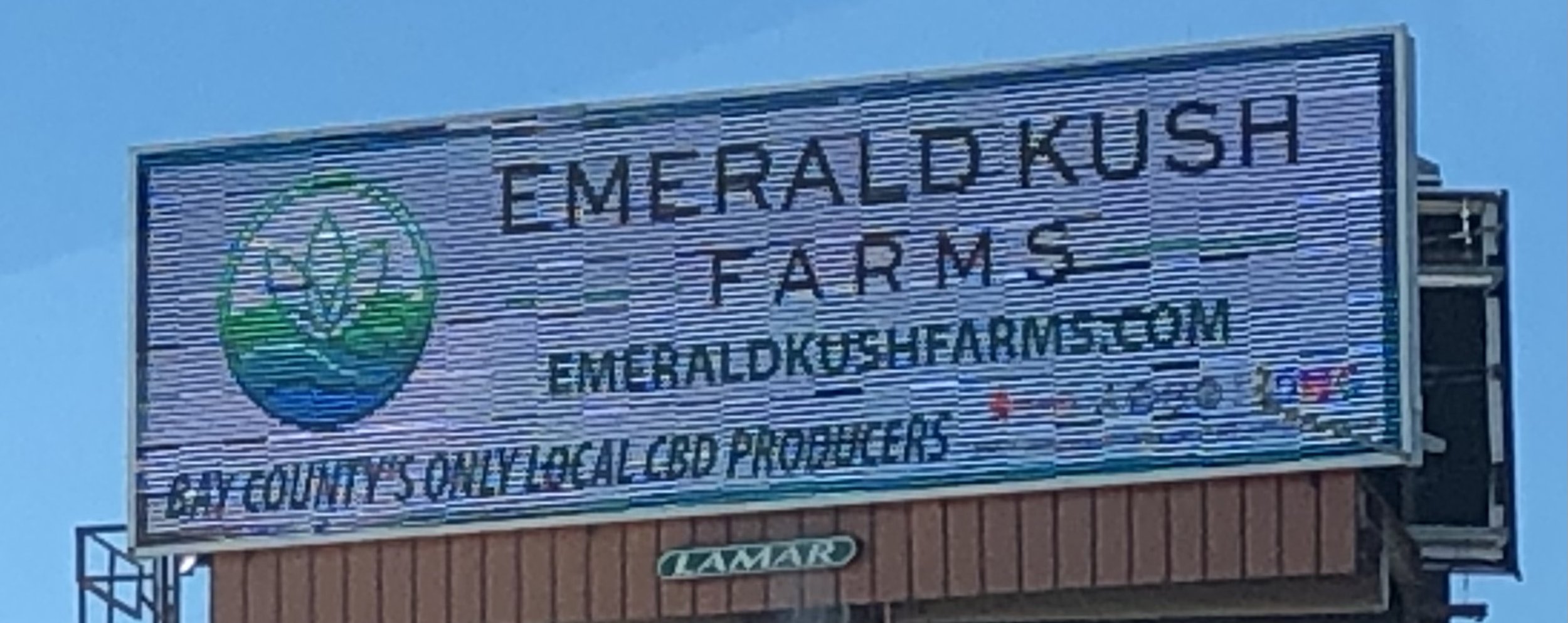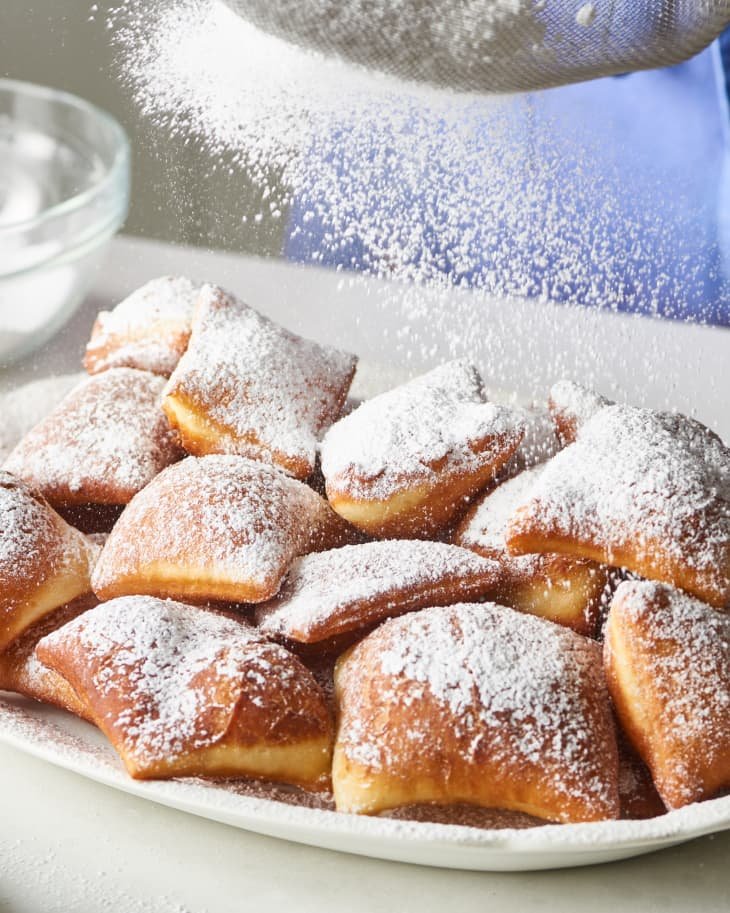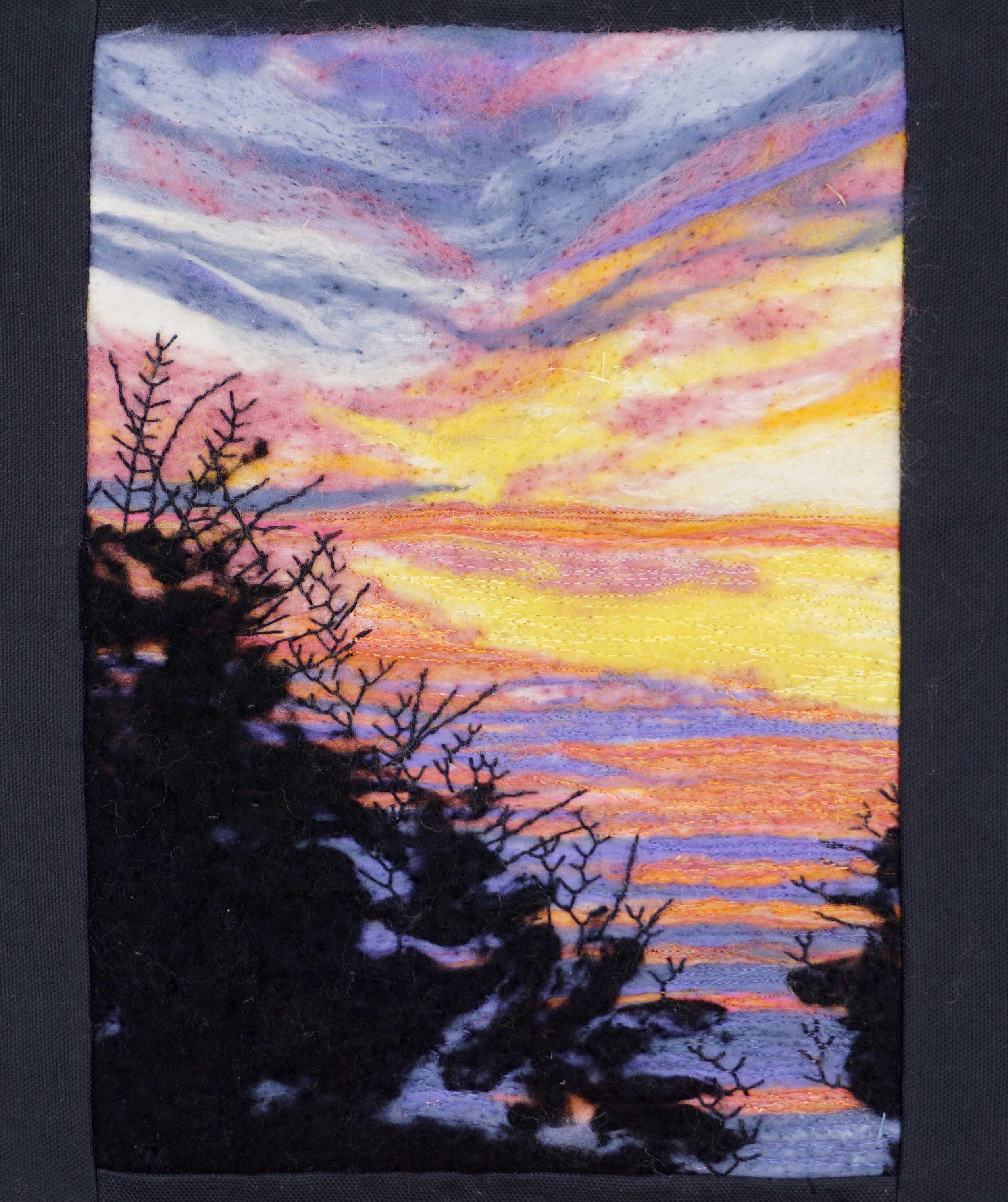Thanksgiving has been idealized in our culture, but scholars have deconstructed it, and viewed it through the rational lens of history, and what they’ve found is that the first Thanksgiving was not a “thanksgiving,” in Pilgrim terms, but a “rejoicing.” If they were actually giving thanks, they would have been engaged in prayer and quiet contemplation. By contrast, a rejoicing featured feasting, drinking, militia drills, and target practice. It was a party, not a prayer, and the Pilgrims didn’t invite their Native American neighbors. Rather, the Wampanoags showed up unbidden because they had previously entered a mutual defense pact with the Pilgrims, and when they heard the gunfire, assumed that the settlers were under attack and came to aid them. A lot of the Wampanoags showed up. There was a long moment of wariness as the two groups faced one another, but the two peoples recognized one another, in some uneasy way, and spent the next three days together.
The childhood myth is that friendly natives welcome the Pilgrims to America, teach them how to live in this new place, sit down to dinner with them and then disappear. They hand off America to white people so they can create a great nation dedicated to liberty, opportunity and Christianity for the rest of the world to profit. That’s the story—it’s about Native people conceding to colonialism.
But the mythic story of the first Thanksgiving from our childhood days was, according to another historian, developed at a time when Americans were worried about the number of immigrants flooding into the country, and decided that the Pilgrims, and New England as a whole, were perfectly cast as national founders: white, Protestant, democratic, and blessed with a noble American character centered on family, work, individualism, freedom, and faith.
The Thanksgiving we celebrate today did not start to take shape until 1841, when a New England-born Unitarian minister, the Reverend Alexander Young, looked back onto an almost contemporaneous account of that day, published in 1622, and decided that the events of that day were a rejoicing harvest festival and an opportunity to give thanks.
This myth may be a self-serving fraud. And regardless of the origin or veracity of the myth, there is plenty in our contemporary life to challenge the Norman Rockwell image of Thanksgiving, and to bring us to grief, rather than thanks:
· the theft of land from the Native Americans and the erasure of their culture;
· the war in Ukraine, bringing death, starvation, and cruelty to innocent people;
· racial inequity bringing suffering and hardship to people whose ancestors were brought to this country in chains;
· the suffering of refugees around the world;
· the subversion of our democracy here with lies and even violence;
· the rape, violation, and slow death of the planet that has given us so much; and more.
On a more individual level, many of us are suffering wrongs, sadnesses or injustices in very personal ways.
And so, if we still feel gratitude now, it might be called gratitude in a time of trauma, as expressed in this poem by American poet W.S. Merwin:
Thanks
By W. S. Merwin
Listen
with the night falling we are saying thank you
we are stopping on the bridges to bow from the railings
we are running out of the glass rooms
with our mouths full of food to look at the sky
and say thank you
we are standing by the water thanking it
standing by the windows looking out
in our directions
back from a series of hospitals back from a mugging
after funerals we are saying thank you
after the news of the dead
whether or not we knew them we are saying thank you
over telephones we are saying thank you
in doorways and in the backs of cars and in elevators
remembering wars and the police at the door
and the beatings on stairs we are saying thank you
in the banks we are saying thank you
in the faces of the officials and the rich
and of all who will never change
we go on saying thank you thank you
with the animals dying around us
taking our feelings we are saying thank you
with the forests falling faster than the minutes
of our lives we are saying thank you
with the words going out like cells of a brain
with the cities growing over us
we are saying thank you faster and faster
with nobody listening we are saying thank you
thank you we are saying and waving
dark though it is
W.S. Merwin
(LONG PAUSE)
Yes, parts of our world are dark, but we can and must look for things to be thankful for. It is by no means easy to find ways of being grateful in times of adversity. Adversity doesn't discriminate. If you are alive, you have dealt, or will deal with some tough times. Sometimes we have to go out of our way to find causes for gratitude.
Brother David Steindl-Rast, a 96 year-old Benedictine monk, reminds us that causes for gratitude are all around us. Nature’s beauty, for example, is a gift that cries out for appreciation and gratitude. Look at the sky. This day, right now, has unique weather, maybe a kind that will never exactly, in that form, come again. The formation of clouds in the sky will never be the same as it is right now. Let’s open our eyes and look.
Brother Steindl-Rast also urges us to open our hearts to the incredible gifts that civilization gives us. “You flip a switch, and there is electric light. You turn a faucet, and there is warm water and cold water, and drinkable water. These are gifts that millions and millions in the world will never experience.” We can also find positive sides in personal and family relationships, even if not in all of them.
Brother Steindl-Rast’s message is that if we open our hearts to gratitude, we will be happier.
I know that many Unitarians like to focus on the concrete, the verifiable, and the pragmatic. For those folks, the pie is not in the sky but on a plate.
So in deference to the fact-based Unitarian mindset, I’m going to turn to some consequences of gratitude that are physically and psychologically verifiable.
The benefits of expressing gratitude are psychological, social and physical -- increases in happiness, decreases in depression, having stronger relationships and experiencing positive emotion.
There is physiological evidence of the benefits of expressing and experiencing gratitude. Brain imaging shows that when we experience and express gratitude, several parts of our brain in the medial prefrontal cortex are activated. Expression of gratitude wires and fires new neural connections and works the way many antidepressants work.
These activated neural pathways help us cognitively restructure potentially negative thoughts to better manage our circumstances. And the delightful thing about this process is that we can intentionally activate these gratitude circuits in our brain, and the more we do this, the easier it becomes.
Brother Steindl-Rast says that he wishes “for all of us to open our hearts to all these blessings, and let them flow through us, so that everyone whom we will encounter on this day, and every day, will be blessed by each of us, by our eyes, by our smiles, by our touch, or simply by our presence. Let the gratefulness overflow into blessing all around us.
In that spirit I offer a prayer of gratitude for simple beauty, written in the 1200s by Francis of Assisi. Francis started life as a wealthy young man living the high life who later came to renounce his ways and live a life of poverty. He and his followers celebrated and even venerated poverty, which was central to his character. He believed that nature itself was the mirror of God. He called all creatures his “brothers” and “sisters” and experienced a deep sense of connection under God. I know that many Unitarians dislike references to the Lord, but I ask you to remember that Francis lived in the 13th century, and also to respect the deists and theists among us, for whom “the lord” is not a foreign phrase.
The Canticle of the Sun (Canticle of the Creatures)
by Francis of Assisi
Most high, all powerful, all good Lord! All praise is yours, all glory, all honor, and all blessing. […]
Be praised, my Lord, through all your creatures, especially through my lord Brother Sun, who brings the day; and you give light through him. And he is beautiful and radiant in all his splendor! Of you, Most High, he bears the likeness.
Be praised, my Lord, through Sister Moon and the stars; in the heavens you have made them, precious and beautiful.
Be praised, my Lord, through Brothers Wind and Air, and clouds and storms, and all the weather, through which you give your creatures sustenance.
Be praised, My Lord, through Sister Water; she is very useful, and humble, and precious, and pure.
Be praised, my Lord, through Brother Fire, through whom you brighten the night. He is beautiful and cheerful, and powerful and strong.
Be praised, my Lord, through our sister Mother Earth, who feeds us and rules us, and produces various fruits with colored flowers and herbs.
Be praised, my Lord, through those who forgive for love of you; through those who endure sickness and trial. Happy those who endure in peace, for by you, Most High, they will be crowned.
Be praised, my Lord, through our Sister Bodily Death, from whose embrace no living person can escape. […]
Praise and bless my Lord, and give thanks, and serve
with great humility.
And in conclusion, friends, let’s accept the empirical evidence of the beneficial effects of expressing gratitude, and open our hearts and feel it. May it be so.













































































































































